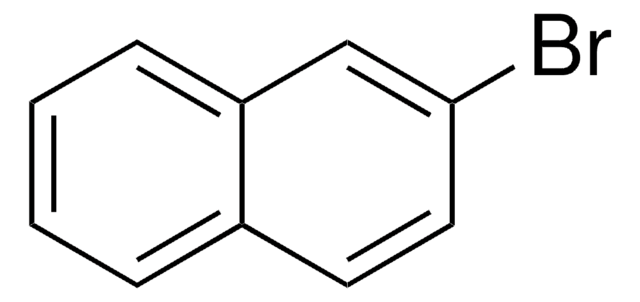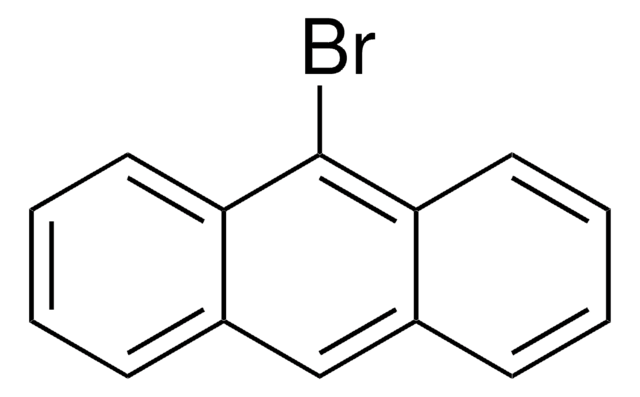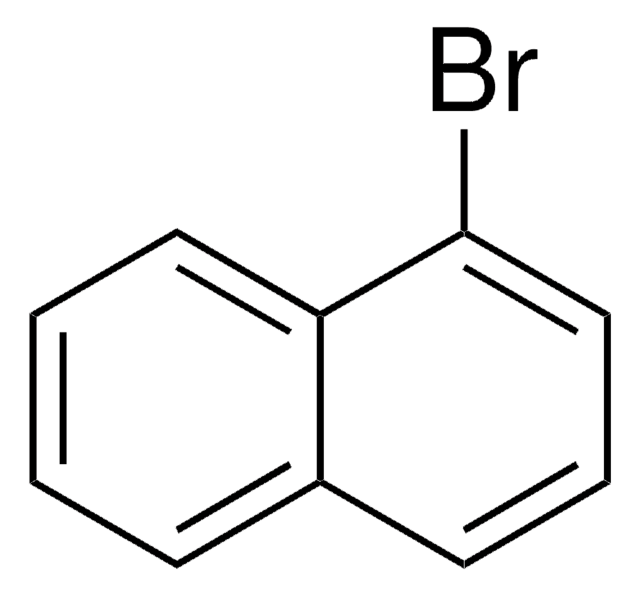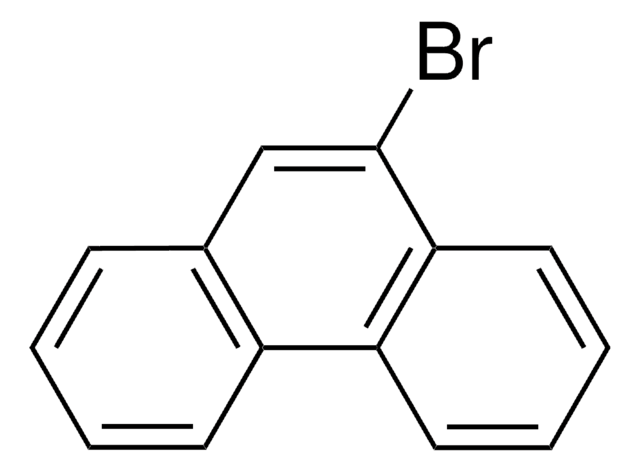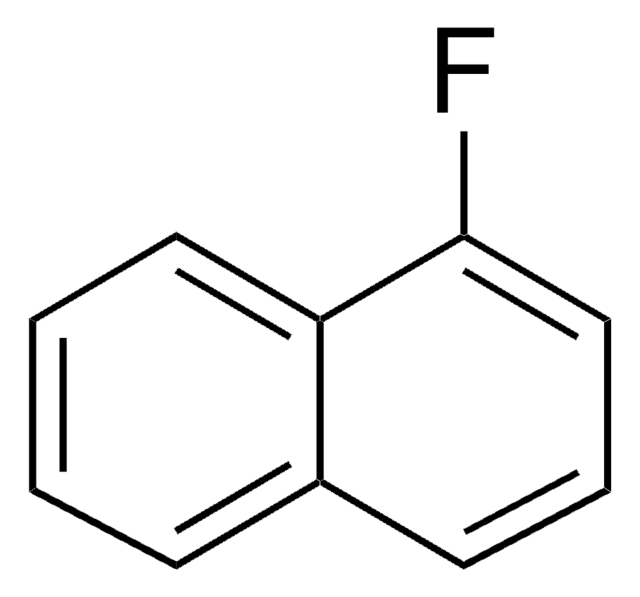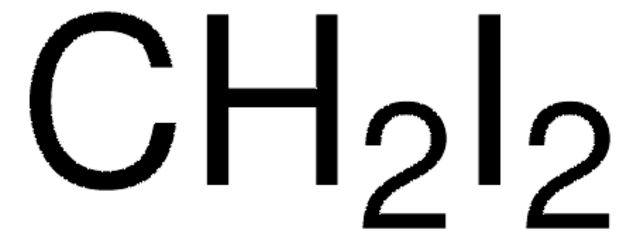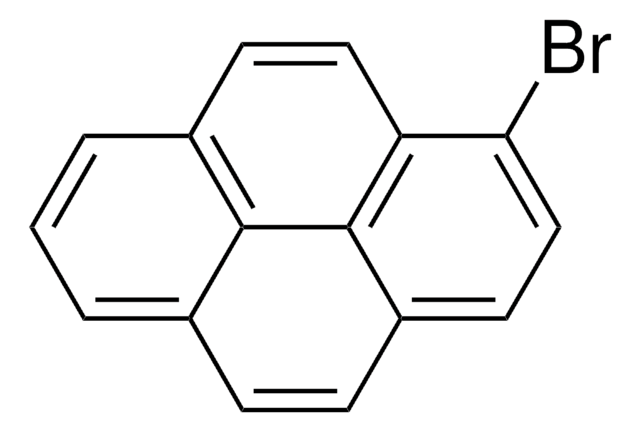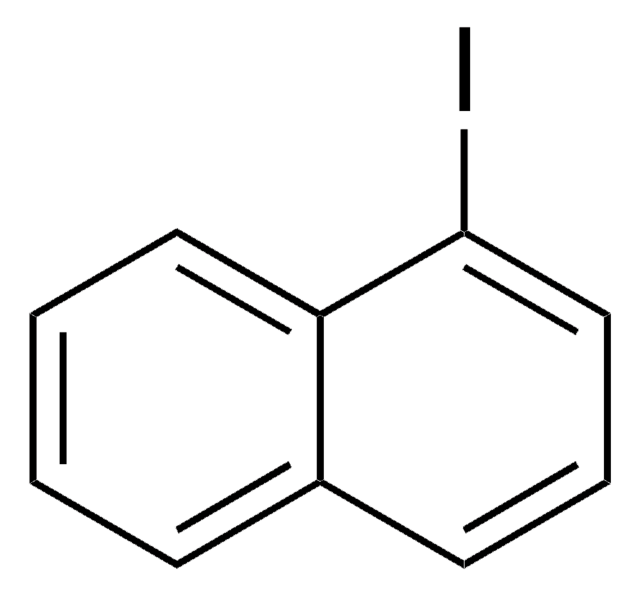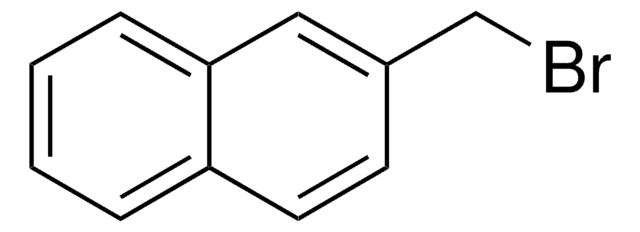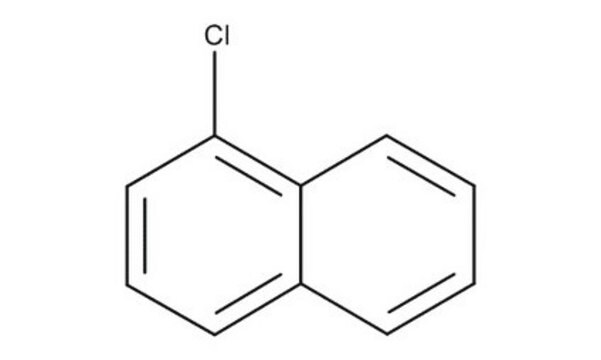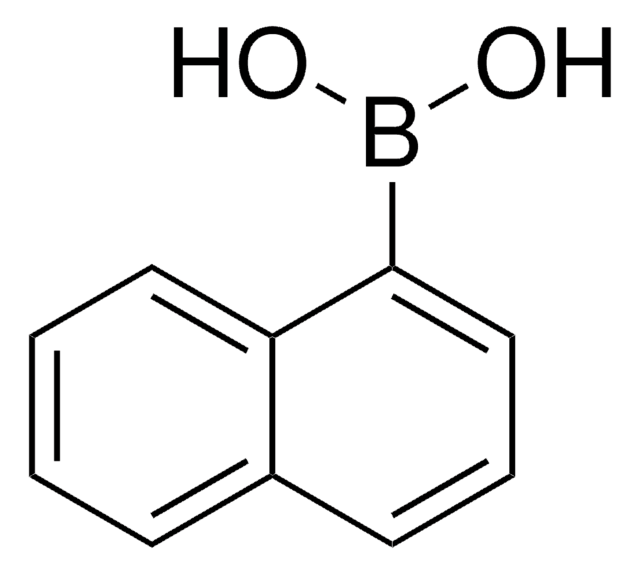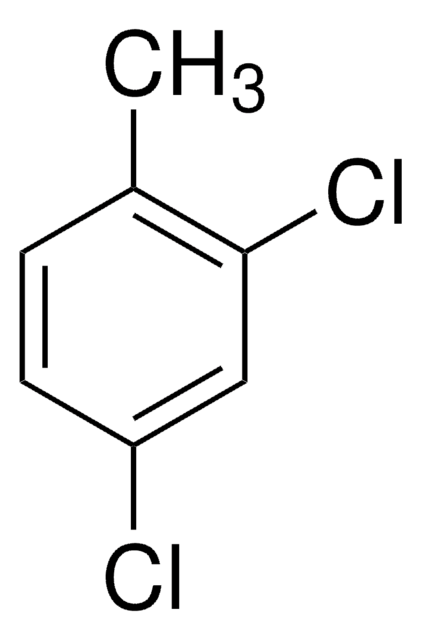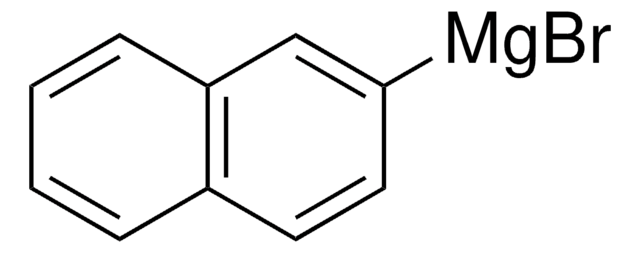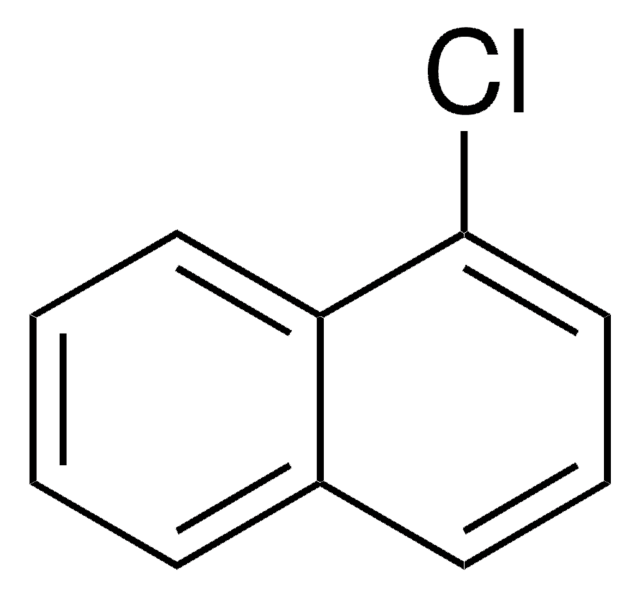B73104
1-Bromonaphthalene
97%
Synonyme(s) :
1-Naphthyl bromide
About This Item
Produits recommandés
Pureté
97%
Forme
liquid
Indice de réfraction
n20/D 1.6570 (lit.)
Point d'ébullition
133-134 °C/10 mmHg (lit.)
Pf
−2-−1 °C (lit.)
Densité
1.48 g/mL at 20 °C (lit.)
Chaîne SMILES
Brc1cccc2ccccc12
InChI
1S/C10H7Br/c11-10-7-3-5-8-4-1-2-6-9(8)10/h1-7H
Clé InChI
DLKQHBOKULLWDQ-UHFFFAOYSA-N
Vous recherchez des produits similaires ? Visite Guide de comparaison des produits
Catégories apparentées
Description générale
Application
- Palladium-catalyzed Suzuki–Miyaura coupling reaction with potassium aryltrifluoroborates without the use of phase-transfer catalysts or phosphine ligands.
- The preparation of indeno annelated polycyclic aromatic hydrocarbons by reacting with o-bromobenzeneboronic acid and oligocyclic bromoarenes via Suzuki-Heck type coupling.
- Ni catalyzed Kumada–Tamao–Corriu cross-coupling reaction with PhMgBr.
- The preparation of arylnaphthalenes via palladium-catalyzed Suzuki-Miyaura cross-coupling reaction with aryl boronic acid.
Mention d'avertissement
Warning
Mentions de danger
Conseils de prudence
Classification des risques
Acute Tox. 4 Oral - Aquatic Acute 1 - Aquatic Chronic 1 - Eye Irrit. 2
Code de la classe de stockage
10 - Combustible liquids
Classe de danger pour l'eau (WGK)
WGK 3
Point d'éclair (°F)
230.0 °F - closed cup
Point d'éclair (°C)
110 °C - closed cup
Équipement de protection individuelle
Eyeshields, Faceshields, Gloves, type ABEK (EN14387) respirator filter
Certificats d'analyse (COA)
Recherchez un Certificats d'analyse (COA) en saisissant le numéro de lot du produit. Les numéros de lot figurent sur l'étiquette du produit après les mots "Lot" ou "Batch".
Déjà en possession de ce produit ?
Retrouvez la documentation relative aux produits que vous avez récemment achetés dans la Bibliothèque de documents.
Les clients ont également consulté
Protocoles
Zirconium bromonorbornanelactone carboxylate triacrylate (PRM30) is a zirconium-containing multifunctional acrylate useful for producing cured, transparent films with high refractive indices.
Notre équipe de scientifiques dispose d'une expérience dans tous les secteurs de la recherche, notamment en sciences de la vie, science des matériaux, synthèse chimique, chromatographie, analyse et dans de nombreux autres domaines..
Contacter notre Service technique